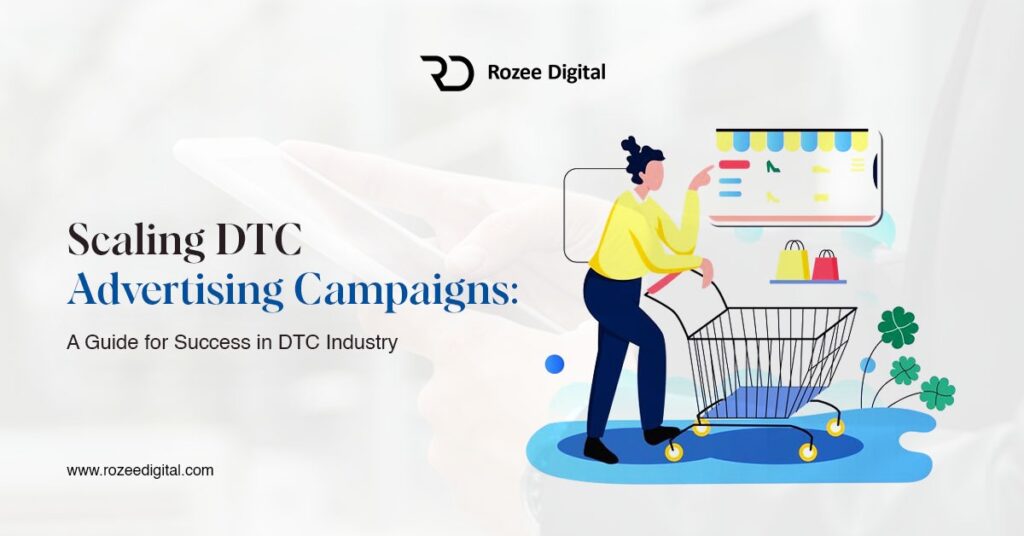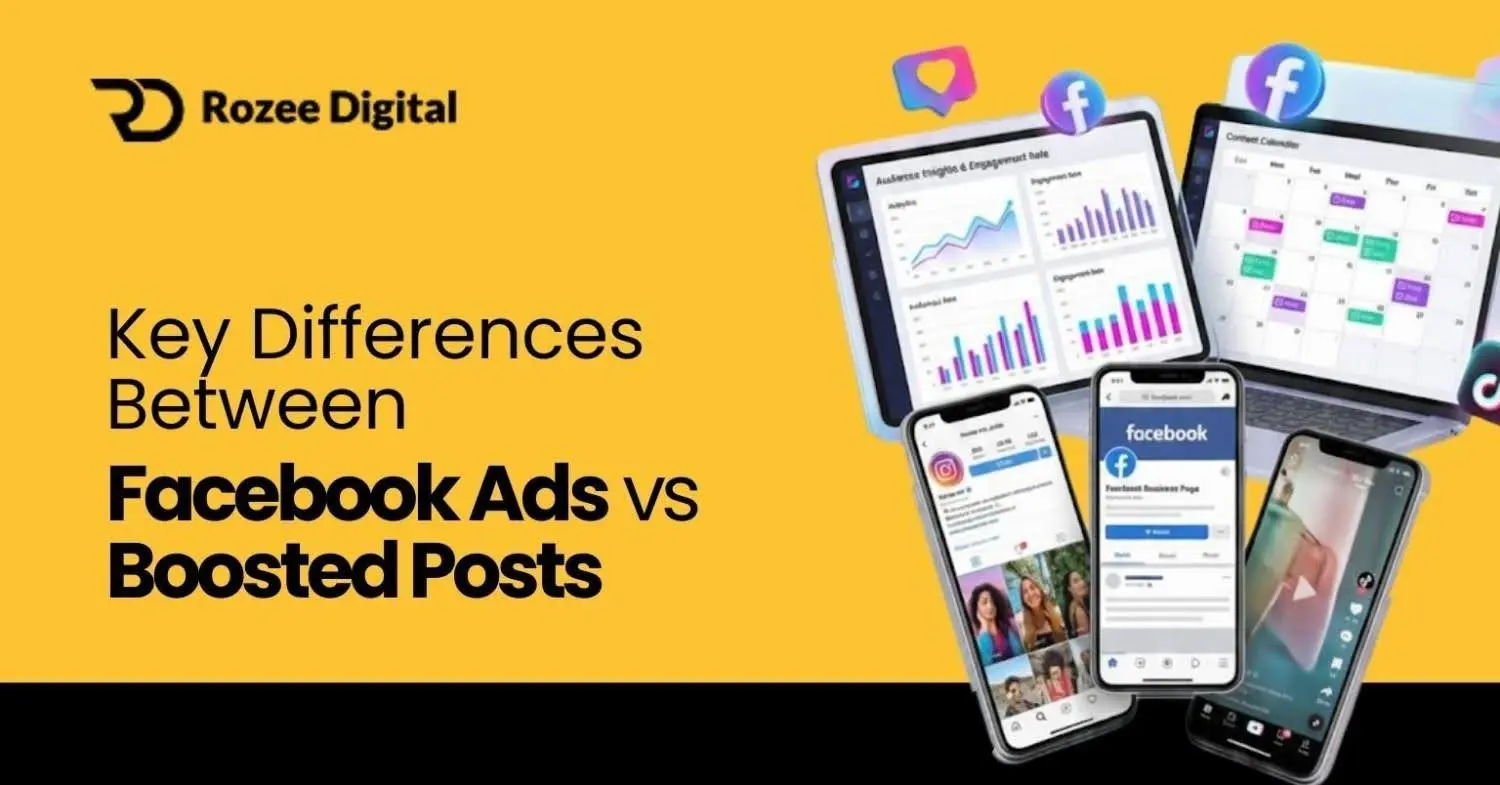In modern marketing, the DTC industry stands as a beacon of innovation and opportunity. As a marketer, your objective is to increase brand visibility and drive sales, all while minimizing customer acquisition expenses. DTC in business marketing presents an excellent avenue to achieve these goals.
However, it’s undeniable that managing and expanding a DTC brand can feel daunting.
With statistics indicating that ‘8 out of 10 DTC e-commerce businesses fail,’ devising a strategy to scale your D2C brand becomes paramount for its success. Numerous variables come into play when scaling DTC e-commerce brands.
In this guide, we’ll delve into D2C strategies, tips, and benefits for scaling your DTC advertising campaigns effectively.
Understanding DTC Advertising
Let’s begin with a simple term, What Does DTC Mean in Business? DTC stands for “direct-to-consumer” and refers to the practice of selling products directly to consumers without intermediaries.
At its core, D2C advertising revolves around the principle of direct engagement with consumers. It encompasses various channels, including social media, search engine marketing, influencer partnerships, email marketing, and more. Unlike traditional advertising, D2C campaigns prioritize personalization, data-driven insights, and measurable outcomes. This direct relationship with consumers allows DTC e-commerce brands to gather valuable feedback, iterate quickly, and optimize campaigns for better results.
The Importance of Scaling
Scaling your DTC advertising campaigns means expanding your reach and effectiveness to acquire more customers for your direct-to-consumer brand. It involves using data, creative messaging, and strategic targeting to reach new audiences while optimizing campaigns for better results.
Scaling your DTC advertising is like taking your customer acquisition to the next level. It’s about using data to understand what’s working in your ads and where to improve. This data then helps you target new people similar to your existing fans.
However, brand scaling brings its own set of challenges, including maintaining campaign effectiveness, managing costs, and ensuring consistent brand messaging across channels and markets. To overcome these challenges, successful DTC brands must adopt a strategic approach to scaling their DTC advertising efforts.
How to scale a D2C brand from 7 to 8 figures??

D2C brand from 7 to 8 figures
If you are a business owner, then you surely know the 8-figure meaning. But if you are just a startup then you first should know “How Much Is 8 Figures”, 8 figures refer to a sum of money ranging from $10 million to $99.9 million. Who doesn’t want this much revenue? So, scaling a direct-to-consumer (DTC) brand from 7 to 8 figures is a financial achievement that requires a strategic approach and careful execution.
To scale and grow your D2C brand from 7 to 8 figures, focus on optimizing operations, setting clear goals, and enhancing customer acquisition. Streamline business processes, invest in efficient marketing strategies like social media ads and influencer partnerships, and continually innovate product offerings to meet customer needs. Maximize customer lifetime value through exceptional service and loyalty programs. Expand distribution channels, monitor performance metrics closely, and remain agile to adapt to market changes. By prioritizing these strategies, you can successfully elevate your DTC brand to the next level of revenue and growth.
Advantages of D2C Advertising
- More control over product branding, marketing, positioning, and distribution channels.
- Reach more customers across multiple channels and markets resulting in higher sales and revenue growth.
- Quicker product launches at competitive prices, leading to faster time-to-market.
- Access to first-party customer data for a deeper understanding of your buyer demographics.
- Raised profit margins, as there’s no need to offer discounts to retailers when selling products.
- Refine audience targeting for better engagement.
Challenges Associated with Scaling DTC Advertising
Despite its advantages, Scaling DTC advertising presents certain challenges that warrant consideration.
- Budget Allocation and ROI Optimization: As D2C advertising campaigns expand, allocating budgets effectively across various channels while ensuring a positive return on investment (ROI) becomes increasingly complex. Balancing the need for experimentation with proven strategies is essential for sustainable growth.
- Maintaining Brand Consistency: Scaling DTC advertising campaigns across multiple channels and markets without diluting brand messaging and identity presents a significant challenge. Consistency in branding, messaging, and customer experience must be maintained to preserve brand equity and trust.
- Scalability of Infrastructure and Technology: The infrastructure and technology required to support scaled D2C advertising campaigns must be robust and scalable. Investing in scalable advertising platforms, marketing automation tools, and data analytics solutions becomes imperative to manage the increasing volume of data and campaign complexity.
- Audience Segmentation and Personalization: As the audience base grows, effectively segmenting the audience and delivering personalized messaging becomes more challenging. Ensuring relevant and targeted communication to diverse audience segments requires advanced segmentation strategies and dynamic content creation capabilities.
- Competition and Saturation: Scaling DTC advertising campaigns often leads to increased competition and market saturation. Standing out amidst a crowded DTC marketplace becomes more difficult, necessitating continuous innovation, differentiation, and strategic positioning to maintain a competitive edge.
- Adapting to Regulatory Changes: As DTC advertising campaigns expand into new markets and regions, compliance with evolving regulations and legal requirements becomes crucial. Staying abreast of regulatory changes and adapting marketing strategies accordingly is essential to avoid potential penalties and reputational damage.
- Customer Service and Support: Scaling D2C advertising campaigns may result in a higher volume of customer inquiries, complaints, and support requests. Ensuring timely and effective customer service becomes challenging, requiring investment in customer support infrastructure and training to maintain high levels of customer satisfaction.
- Data Privacy and Security: With the collection and processing of large volumes of customer data, ensuring compliance with data privacy regulations and safeguarding sensitive customer information becomes paramount. Implementing robust data privacy and security measures is essential to protect customer trust and mitigate the risk of data breaches.
Key Principles for Scaling D2C Advertising Campaigns
1. Data-Driven Decision Making
- Utilize data analytics tools to gain insights into audience behavior, campaign performance, and ROI.
- Continuously monitor key metrics such as customer acquisition cost (CAC), customer lifetime value (CLV), conversion rates, and return on ad spend (ROAS).
- Use A/B testing to optimize ad creative, messaging, targeting parameters, and landing pages for maximum impact.
2. Audience Segmentation and Personalization
- Segment your audience based on demographics, interests, behavior, and purchase history.
- Tailor ad content and messaging to resonate with different audience segments.
- Implement dynamic ad creative and personalized recommendations to enhance relevance and engagement.
3. Scalable Infrastructure and Technology
- Invest in scalable advertising platforms, marketing automation tools, and customer relationship management (CRM) systems.
- Leverage cloud-based solutions for flexibility, scalability, and real-time data processing.
- Implement robust tracking and attribution mechanisms to accurately measure the impact of your campaigns across channels and touchpoints.
4. Creative Agility and Innovation
- Stay agile and responsive to market trends, consumer preferences, and competitive dynamics.
- Experiment with new ad formats, channels, and emerging technologies to stay ahead of the curve.
- Foster a culture of creativity and innovation within your marketing team, encouraging experimentation and risk-taking.
5. Cross-Channel Integration and Optimization
- Develop an integrated marketing strategy that leverages multiple channels and touchpoints to create a cohesive brand experience.
- Implement cross-channel attribution models to understand the interplay between different marketing channels and allocate budget accordingly.
- Continuously optimize your media mix and channel mix based on performance data and audience insights.
DTC Advertising Campaigns Strategies to Take Your Campaigns from Good to Great:
1. Data is Your Best Friend
Before scaling up, make sure you understand what’s working and what’s not. Utilize analytics platforms like Google Analytics and Facebook Insights to track campaign performance. See which demographics engage most, what messaging resonates, and where in the sales funnel drop-off occurs. This data guides future campaign decisions and helps you optimize ad spend.
2. Retargeting: A Goldmine
Your existing customer base is a goldmine. People who have already shown interest in your brand are more likely to convert again. Retargeting allows you to show ads to website visitors or past purchasers, reminding them of your products and enticing them back for another purchase.
3. Creative that Captivates
In a crowded digital space, eye-catching ad creative is essential. High-quality visuals, compelling ad copy, and strategic targeting will grab attention and get your message across. Consider A/B testing different creatives to see which ones resonate most with your audience.
4. Embrace the Power of Storytelling
People connect with stories. Use your advertising to tell the story of your brand, your product, and the value it brings to customers. Showcase how your product solves a problem, improves lives, or fits into their lifestyle.
5. Consider Influencer Marketing
Partnering with relevant influencers can be a powerful way to reach new audiences. Look for influencers whose target demographic aligns with yours and who genuinely connect with your brand. Their endorsement can add credibility and authenticity to your advertising message.
6. Expand Your Advertising Horizons
Don’t limit yourself to one platform. Explore advertising opportunities on various channels like social media platforms (think beyond the usual suspects!), search engines, and even podcasting. The key is to be present where your target audience spends their time.
7. Optimize Your Landing Page
Your landing page is where the magic happens. Ensure it’s user-friendly, informative, and compels visitors to take action. Clear calls to action, product benefits prominently displayed, and a seamless checkout process are all crucial for conversion success.
8. Test, Analyze, and Refine
Scaling DTC advertising is an ongoing process. Continuously test different strategies, analyze the results, and refine your approach. By being data-driven and adaptable, you can ensure your campaigns keep delivering optimal results.
Conclusion
As entrepreneurs and established brands alike seek to capitalize on the vast potential of D2C e-commerce growth, navigating the intricacies of scaling their ventures becomes paramount. Whether you’re a newcomer to the DTC industry or a seasoned player, understanding the dynamics of DTC in business is essential for success.
Scaling direct-to-consumer (DTC) advertising campaigns is a multifaceted endeavor that requires careful planning, strategic execution, and continuous optimization. By embracing data-driven decision-making, audience segmentation, creative innovation, brand scaling, and cross-channel integration, brands can unlock the full potential of D2C advertising and achieve sustainable growth.
Despite the challenges associated with scaling, the rewards are significant – increased brand visibility, higher revenue, and deeper customer engagement. As the digital landscape continues to evolve, mastering the art of scaling D2C advertising will remain essential for brands looking to thrive in an increasingly competitive market. With the right strategies and a commitment to innovation, brands can pave the way toward success and position themselves as leaders in the direct-to-consumer space.
Lastly, as you chart the course to grow your D2C brand, remember that agility, innovation, and adaptability are the keys to thriving in the ever-evolving landscape of the D2C industry.
FAQS
1. What is D2C advertising?
D2C advertising, or direct-to-consumer advertising, involves marketing products directly to consumers without intermediaries.
2. What are the benefits of scaling a D2C brand?
Benefits include more control over branding, higher profit margins, and access to first-party customer data for better marketing decisions.
3. What are the critical considerations for growing a D2C brand from 7 to 8 figures?
Essential factors include refining product-market fit, assembling a capable team, optimizing financial strategies, and adapting marketing approaches to evolving consumer needs and market dynamics.
4. How can brands maintain brand consistency when scaling DTC advertising?
By establishing clear brand guidelines and messaging frameworks across all channels and touchpoints.
5. What risks should businesses be aware of when scaling a DTC brand?
Risks include increased competition, compliance challenges, and maintaining quality customer service amidst higher demand.
6. Which marketing strategies prove effective for expanding a DTC brand?
Successful approaches encompass disseminating informative content to educate consumers, gauging market interest through presell pages, and leveraging diverse channels such as social media and Google Ads. Customizing marketing endeavors to consumer preferences and market shifts is also vital.





